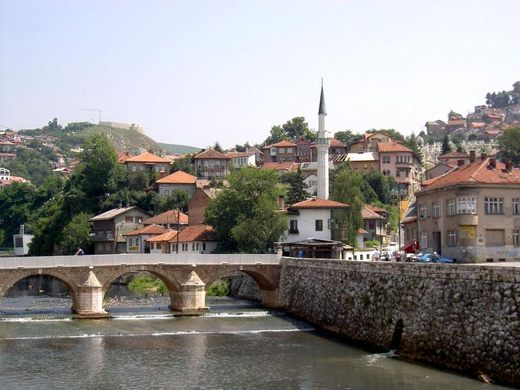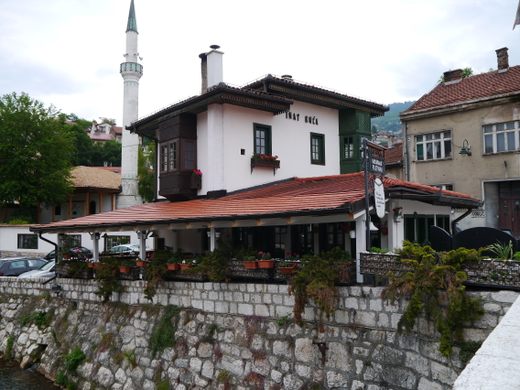Sarajevo Spite House
Inat Kuća, or "House of Spite," is more than just an oddly named restaurant.
In 1878, Austria-Hungary gained control of Bosnia and Herzegovina via the Treaty of Berlin, and promptly set to work occupying the country and expanding Habsburg influence in the Balkans (which — spoiler alert — was a project that did not end well). Part of their plan involved transforming Sarajevo into a model colony where modern urban planning practices and new technologies could be tested for use throughout the empire. First, however, they’d have to overcome an unexpected obstacle: one stubborn old man.
As part of Sarajevo’s makeover, Austro-Hungarian city officials began construction in 1892 on a magnificent new city hall. The building was designed to be a show of great strength and power, as well as an integrated part of the city’s new tram system. Their first task was clearing the land for the structure to be built.
After demolishing several houses that would be in the way, though, they ran into a problem. An elderly Bosnian fellow named Benderija refused to agree to the destruction of his house, even after being offered more money than the property was worth. Without the land under his house, there would be no way for the city hall to be built at the desired location, right next to the River Miljacka. Lengthy negotiations ensued between the old man and the city (with even the Austro-Hungarian Minister of Finances getting involved) until finally, in 1895, he agreed to sell his property for the extravagant price of a sackful of gold ducats, but only under one condition: the authorities would have to move his Ottoman-era house, brick by brick, and rebuild it on the other side of the river.
Benderija got his way; in the popular account of the story, the old man spent every day of the move sitting in the middle of a nearby bridge, smoking cigarettes and carefully watching the workers transport each brick across the river. When the house was finally rebuilt, it was aptly named Inat Kuća, or the House of Spite.
Today, this proud symbol of Bosnian stubbornness serves a more practical purpose: it was converted into a Bosnian restaurant in 1997.
Know Before You Go
The building is across the River Miljacka from the Vijećnica City Hall, which is now a museum.
The restaurant serves traditional Bosnian cuisine 11AM-11PM every day of the week.



























Follow us on Twitter to get the latest on the world's hidden wonders.
Like us on Facebook to get the latest on the world's hidden wonders.
Follow us on Twitter Like us on Facebook